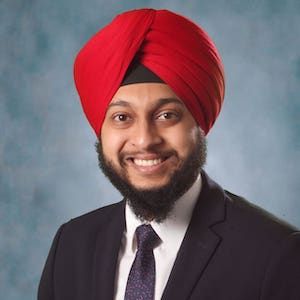Article
Shaq and Elizabeth Ofili, MD: Novel Approaches to Heart Failure Education
Author(s):
Shaquille O'Neal, EdD, and Elizabeth Ofili, MD, discuss how organizations and physicians are taking novel approaches to engage patients and non-patients about heart failure.
Up until recently, not many associated NBA legend Shaquille O’Neal with heart failure, but it may be hard to shake that association among many cardiologists after serving as the keynote speaker at the Heart Failure Society of America 2019 Scientific Sessions.
While he has a doctorate in education, O’Neal’s involvement with heart failure began when he partnered with Arbor Pharmaceuticals in March for their Shaquille Gets Real About Heart Failure campaign, which aims to increase awareness of the disparities of heart failure rates in African Americans. The partnership is just one example of the many ways cardiologists, clinicians, and healthcare organizations have employed to address disparities in underserved populations.
Another example is the “barbershop intervention”. In a study conducted across barbershops in Los Angeles County investigators trained barbers to measure customers’ blood pressure and promote follow-up visits with pharmacists.
With new, creative ways being developed to engage patient and non-patients alike the onus on efficacious implementation has never been greater. MD Magazine® caught up with O’Neal and fellow keynote speaker Elizabeth Ofili, MD, professor of medicine at Morehouse School of Medicine and the first female president of the Association of Black Cardiologists, to discuss how this new trend has impacted cardiology.
​​​​​​​
MD Mag: How have novel approaches such as the "barbershop intervention" challenged conventional ways of thinking about patient engagement?
Ofili: I think some of that messaging is around understanding that these risk factors of high blood pressure over time will lead ultimately to heart failure but actually understanding how to recognize the symptoms — again if you don't know that shortness of breath with activity or when you're short of breath with just doing your regular daily activity you'll have swelling it is not normal it needs to be checked out.
So, we move from yes we're trying to prevent the disease but also we need to recognize early if the disease is there because those are the points where you can actually make a difference by getting early treatments and preventing getting hospitalized and so on. I think that's a continuum.
Shaq: And it all goes back to the stigma of seeing a physician. So they trained barbers to detect high blood pressure and told them if this numbers is over this number you're probably going to tell them this or tell them that. It all brings it back to just go and see a physician once, twice, or 3 times a year. Don't have the bravado attitude that I had.




